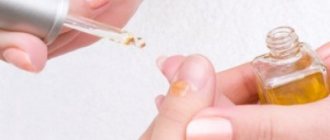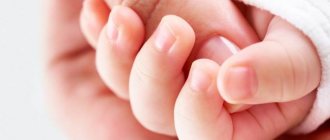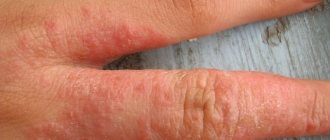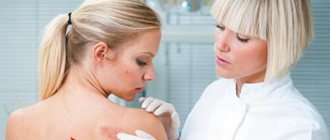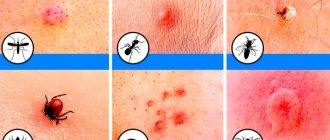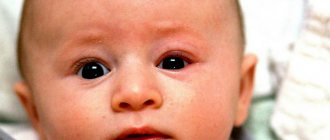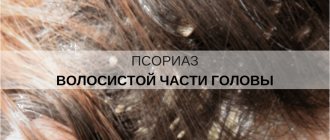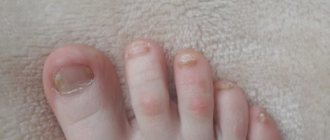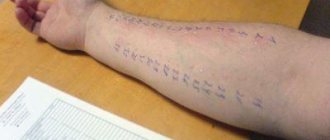Allergy is a disease that is an inadequate reaction of the body to various substances, which are therefore called allergens. Allergic conditions are caused by too high sensitivity of the immune system, especially in children, due to its imperfection, as well as due to the immaturity of the gastrointestinal tract. They are, among other things, characterized by visual manifestations: redness, rash, spots and even blisters on the skin. Blisters can occur quite suddenly and usually appear in groups.
Factors and risk group for developing an allergic reaction
In addition to the fact that the skin is a reflection of what is happening inside the body and illustrates its reaction to substances ingested (for example, food, medicine), it itself is in direct contact with a huge number of different substances. For this reason, dermatological reactions, including blisters on the body, are quite common.
The main factor in the development of allergies at the moment remains genetic predisposition. If there are allergies in the family, the likelihood of it developing in the child is very high.
In children, allergic reactions occur quite often, this is dictated by the immaturity of their immune system. Blisters appear in babies, especially if there is already a diagnosis of diathesis in the anamnesis. Blisters of an allergic nature often occur in children, since their body consists of water to a greater extent than that of adults. For this reason, swelling also often occurs.
Among other factors, there are those that reduce immunity:
- chronic diseases and frequent colds;
- increased drug load;
- unfavorable environment;
- unstable emotional state, prolonged stress;
- complicated pregnancy: infectious diseases in the early stages, gestosis, fetal hypoxia, premature birth.
How to treat a dangerous disease
A child's allergy can last from one to three weeks, depending on his diet, the effectiveness of treatment and immunity. In most cases, relief occurs after the child's contact with the irritant is eliminated.
But you should not self-medicate. If the rash does not go away for a long time, you should consult a doctor who will select effective methods to combat the dangerous disease.
Child's diet
If an allergic rash appears after eating certain foods, the child is prescribed treatment for food allergies using:
- antihistamines, sorbents (activated carbon, Laktofiltrum tablets, Smecta powder),
- antiallergenic ointments (“Actovidan”, gel “Fenistil”),
- diet.
If a baby has a food allergy, parents should strictly monitor their diet. It is forbidden to consume the product that causes a dangerous illness, since the unpleasant symptoms will make themselves felt again.
You should not feed your baby dairy products, smoked products (sausage, lard, meat), eggs, citrus fruits, strawberries, nuts, chocolate, mayonnaise, ketchup, nuts.
Allowed foods and dishes include: cabbage, onions, dill, potatoes, celery, buckwheat porridge, natural yogurt, soups in broth made from lean meats (chicken, beef).
Diet for allergies in a child
Drug therapy
The correct choice of medications will alleviate the baby’s condition and reduce the risk of complications. The course of treatment is prescribed by the doctor, and various medications are selected for children of different ages.
Common to all is the use of antihistamines and the use of antiallergic ointments.
To treat allergies in infants, a diet is used (the nursing mother changes her diet, and a hypoallergenic mixture is selected for “artificial” babies). The newborn is prescribed:
- antihistamine drops “Fenistil” (from 1 month), “Cetrin” or “Zertek” (from 6 months),
- antiallergic ointment “Bepanten” (moisturizes and helps restore the skin), “Fenistil” (eliminates itching, has a calming effect).
Drug therapy for allergies
To treat allergies in a one-year-old child and children under 3 years old, use Fenistil, Zodak drops or Tavegil syrup. Allergic rashes are treated with the same ointments that are recommended for infants.
To cleanse the body, you can give your baby “Smecta” or “Phosphalugel”. If the disease is severe, the doctor may prescribe hormonal or immunomodulating drugs - Prednisolone or Deriant (drops).
Treatment of allergies in children over 3 years of age involves eliminating symptoms (this method is also used for younger children) with the help of Suprastin, Claritin, Cetrina, Diazolin.
The second stage is treatment of the disease. From the age of 5, a child can undergo SIT (specific immunotherapy). Its essence is as follows: a small patient is dosed with an allergen, which leads to a strengthening of the immune system and a decrease in sensitivity to the irritant.
It is impossible to protect your baby from all unfavorable factors, but following simple rules will help avoid serious complications.
To prevent allergies in a child, it is recommended:
- strengthen the baby's immunity,
- carefully introduce into his diet foods that can cause allergies,
- keep the house clean (it is important that there is as little dust as possible),
- use hypoallergenic household chemicals,
- Wear your child’s clothes only from natural materials.
Causes of allergies in the form of blisters
An allergy with the manifestation of a skin reaction in the form of blisters can occur under the influence of various groups of allergens.
Possible allergy triggers
| Stimulus | Symptoms and course of reaction |
| Dust | It often occurs under the influence not of the dust itself, but of the microscopic mites that live in it. It can manifest itself as redness of the skin or the appearance of grouped blisters, accompanied by severe itching. |
| Medications | It usually manifests itself if therapy involves the use of one drug in large quantities. This often happens when using penicillin-type drugs, but the catalyst for the manifestation of allergies can also be anesthetics, salicylates, etc. The skin reaction can be severe, up to the appearance of weeping groups of blisters. |
| Sun | Photodermatitis occurs in approximately 20% of the population. This often happens from an overdose of sunbathing on the beach or an unsupervised visit to a solarium. The skin's reaction to ultraviolet radiation varies: redness, itching, and the appearance of pinpoint blisters. |
| Insect poisons | The reaction occurs to the bites of various insects. After them, swelling and pain occur, and skin blisters may appear. This usually goes away within a few hours, but sometimes you have to seek help from a specialist. |
| Patch | The likelihood of a reaction to the patch is high in people who initially have skin problems such as dermatitis and eczema. Also, prolonged exposure of the patch to the same area of skin can provoke an allergy with the appearance of blisters. First there is redness, then grouped areas with blisters appear that may become wet. |
| Chemicals | Often, an immune response to chemicals manifests itself in people who are constantly exposed to them in their professional activities. |
Symptoms
The appearance of blisters on the body is preceded by various symptoms. Initially, redness of the skin and itching of varying intensity appear.
Blisters appear after a few days. In the absence of mechanical irritation in the form of scratching, they begin to dry out. The skin gradually heals over about a week, provided that contact with the allergen is interrupted. If you constantly touch and scratch the site of the blisters, the healing process will be delayed, and infection may occur, which will cause ulcers to appear.
Such rashes may be aggravated by angioedema. As noted earlier, they have a common occurrence factor - the presence of excess fluid in the body. Quincke's edema is a very dangerous phenomenon, because when the airways become swollen, it leads to suffocation, which can be fatal.
Frequent manifestations of urticaria in a child: what could be the reason?
The occurrence of the disease in question is associated with the general condition of the child’s body, as well as the level of its vascular and nervous excitability. Also, if the cause of the disease is an allergy, until the allergen is identified and eliminated, the disease will recur.
In conclusion, we can say that the disease discussed in the article must be treated, despite the fact that in 50 percent of cases it disappears as quickly as it appears. The choice of pharmacological drugs should be made by a doctor, initially based on the severity and form of the disease.
If your child has chronic urticaria, it will take a little longer to treat it.
Diagnostics
Allergies should be differentiated from other infections and possible pathologies, which at the initial stage manifest themselves with similar symptoms. Diseases such as scabies, atopic dermatitis and hemorrhagic vasculitis should be excluded.
Blood tests are also performed; the following indicators indicate allergies:
- basophil level above 1%;
- excess number of leukocytes;
- eosinophils more than 5% of the total number of leukocytes.
A biochemical blood test is also prescribed. It shows the condition of the internal organs and whether the metabolism is disturbed. If, for example, uric acid is higher than the required level, then the likelihood of a malfunctioning immune system is very high.
Allergy tests can be done no earlier than three years, preferably after 6 years. They are carried out when no more than a month has passed since the first reaction. They are performed by an allergist: special applications impregnated with allergens are glued to the skin, or extracts of irritants are applied directly to the dermis, previously injured by a scarifier; another option is to inject potential causative agents of the reaction subcutaneously with a lancet. In the first case, the result is assessed after two days, in the others - after 15-20 minutes. A positive effect is indicated if hyperemia and swelling are noted in certain areas.
Treatment
The main thing in therapy is to stop all contact with the allergen.
This will in any case reduce the manifestations. To help the skin get rid of them, experts prescribe symptomatic treatment. Symptomatic pharmacotherapy
| Group of drugs | pharmachologic effect | Titles |
| Antihistamines | They help get rid of both local manifestations and the body as a whole. They effectively reduce the effects of histamine, swelling subsides, itching decreases, and blisters dry out. | Tavegil, Claritin, Diphenhydramine |
| Preparations that reduce itching | Eliminating itching helps to stop mechanical stress during the scratching process and eliminates the possibility of infection. | Anestezin, carbolic acid, menthol, Diphenhydramine |
| Antiseptics | Used to reduce the appearance of weeping bubbles. | Chlorhexidine, Silver Nitrate, Potassium Permanganate |
| Enterosorbents | Effectively remove toxins that were formed during the development of allergies. | Activated carbon, Polyphepan, Enterosgel |
| Glucocorticoids | Hormonal drugs help stabilize cell membranes. Cell death is reduced, inflammatory mediators are released, and as a result, the allergic reaction subsides. | Triamcinolone, Dexamethasone |
| Calcium-containing preparations | They affect the vascular wall, thereby reducing the penetration of the allergen. This suppresses the production of exudate, which is contained in allergic blisters in various parts of the body. | Calcium chloride, calcium gluconate |
| Vitamins A, C, E | Helps reduce vascular permeability. |
Physiotherapy is often used for blisters, namely electrophoresis with calcium chloride, Novocacin or Lidase.
When treating allergies with blistering, you need to pay special attention to nutrition. Limit your intake of salt (it retains water in the body), fast carbohydrates, and fatty foods. Coarse fibers are welcome in food, as they actively help get rid of intoxication from the body.
Particular attention should be paid to the hygiene of the affected areas of the skin: do not use washcloths; when choosing soap, it is better to choose baby soap (it does not contain chemical additives), and exclude the use of various lotions and creams during treatment. To moisturize the skin, it is better to use vegetable oil or regular Vaseline.
When treating blisters, traditional medicine is often and successfully used. There are many effective recipes:
- Boil cabbage leaves in milk for five minutes. Apply to affected areas of skin a couple of times a day.
- Verbena. Grind the dried herb and pour boiling water in the proportion: one tsp. for 1 glass of water, let it brew for about 45 minutes. After straining, take three times a day.
- Calendula tea. For 0.5 tsp. you should take 250 ml of boiling water, leave for half an hour, you can add honey. Take twice daily.
- Infusion of birch buds. Pour 50 g of kidneys into 250 g of hot water. After insisting, take 3 times a day.
- Chokeberry. Pour 50 g of dried raw materials into 250 g of boiling water. Leave for two hours. Take 1 tbsp twice a day.
- Ointment. Charcoal is heated with 450 g of lamb fat, about 100 g of linseed oil is added and mixed. Apply a gauze compress to the affected area.
- Decoctions of string and pine buds are used as lotions and for compresses for blisters in children.
- Salt baths can only be taken if there are no wet areas.
Folk remedies should be used exclusively in complex treatment and only after consultation with an allergist.
Prevention
To prevent blisters from appearing, you should follow simple measures:
- get rid of bad habits;
- actively harden yourself and play sports;
- monitor your emotional state and, if possible, eliminate stress;
- When working with various chemicals, protect your skin in every possible way using gloves;
- do not forget about hygiene;
- when choosing cosmetics, pay attention to the composition and give preference to those made from natural ingredients;
- Healthy food;
- when staying on the beach, use special protective creams;
- use special means against insect bites before going into the forest.
Allergies are the scourge of our time. Its manifestations are varied and unpleasant, so everyone should beware of its manifestations, especially people prone to atopy.
On the feet and heels
Most often, blisters that choose such an unusual location are a sign of a fungal disease. You can get rid of it by using topical antifungal ointments and giving the child antifungal drugs orally. A dermatologist should choose a medicine, determine the duration of the course of treatment for mycosis, and the dosage for the child.
On the heels, blisters are most often of mechanical origin. The cause of calluses is uncomfortable shoes. Such formations do not require treatment; it is enough to choose a more comfortable pair of shoes.
